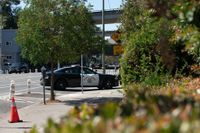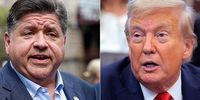Governor Gavin Newsom is taking a bold step to address crime in California, announcing on August 28, 2025, a significant expansion of the state’s law enforcement presence. The new initiative will see California Highway Patrol (CHP) “crime suppression” teams deployed to six regions across the state, with a particular focus on the Bay Area cities of San Francisco and Oakland, as well as San Diego, the Inland Empire, Los Angeles, the Central Valley, and Sacramento. This move builds on an already aggressive strategy that has yielded over 9,000 arrests in the past year, and it comes at a time when the national conversation about crime—and how to handle it—is growing increasingly heated.
Newsom’s announcement, made during a press conference at the state Capitol and attended by high-ranking CHP officials, marks an escalation of tactics first piloted in cities like Oakland and Bakersfield. In those cities, state officers have assisted local law enforcement in cracking down on retail theft, stolen vehicles, drug dealing, and more. The results, according to the governor’s office and CHP data, have been promising: Oakland saw a 34% decrease in homicides and a 25% reduction in robberies in 2024, while shootings in Bakersfield dropped to their lowest levels since before the COVID-19 pandemic. Across Bakersfield, Oakland, and San Bernardino, CHP officers recovered nearly 5,800 stolen vehicles and confiscated over 400 firearms last year.
“Whatever the crime is, when we come in and do just enforcement that leads to good police work, that crime goes down,” said CHP Commissioner Sean Duryee at the press conference. Duryee explained that the new teams would consist of 12 to 15 officers each and would focus on problems flagged by local officials, from illegal street racing to open-air drug markets. The deployments will be unannounced and guided by data-driven intelligence, a strategy designed to disrupt criminal activity where it happens most.
“These crime suppression teams will provide critical support to our local partners by focusing on crime where it happens most. By combining resources, intelligence, and personnel, we can better disrupt criminal activity and strengthen the safety and security of communities across California,” Duryee said in a statement reported by CalMatters.
But this surge in state law enforcement resources is playing out against a backdrop of national political tension. President Donald Trump has recently made headlines by deploying thousands of National Guard troops to Washington, D.C., taking control of its local police force and vowing to expand such interventions to other Democratic-led cities—including San Francisco and Oakland—if he deems them unsafe. Trump’s approach has been to threaten military action to "clean up" cities he claims are plagued by crime, despite, as CalMatters notes, reports of violent offenses in D.C. being at their lowest in three decades.
Newsom has not shied away from drawing a sharp contrast between his own methods and those of the president. During Thursday’s press conference, he held up flyers showcasing Republican politicians whose states have higher murder rates than California. “Perhaps the president could deploy the National Guard in every corner of Mississippi. The murder rate’s out of control there. Carnage,” Newsom said, as reported by CalMatters. “This is if they care about the issues of crime and violence.”
On social media and in interviews, Newsom has described Trump’s approach as “authoritarian,” and he’s positioned California’s efforts as a more collaborative, community-driven alternative. “While the Trump Administration undermines cities, California is partnering with them — and delivering real results,” Newsom said in a statement. “With these new deployments, we’re doubling down on these partnerships to build on progress and keep driving crime down.”
Political experts have weighed in on the governor’s strategy. Dan Schnur, a political professor at UC Berkeley and USC, told ABC7 News, “Rather than coming across as someone who doesn’t think crime is a problem, he’s trying to outmaneuver Donald Trump.” Schnur added, “Gavin Newsom is smart enough to know that statistics aren’t nearly as powerful a message as National Guard troops. He recognizes he has to send a much more tangible signal as well.”
Newsom, for his part, has denied that the expansion is simply a reaction to Trump’s rhetoric or actions. "We're not reacting to, responding anything. Quite the contrary. With one caveat: the community wants to see more. And, we are trying to be responsive to the people we serve," he told reporters. “You still have people whose cars are broken into. You still have crimes being committed. You still have murders. I’m not arguing to defend the status quo. Quite the contrary. We think we can do better still.”
The governor’s approach is not without its critics and skeptics. Magnus Lofstrom, a crime researcher at the Public Policy Institute of California, told CalMatters that while it’s plausible the strategy contributed to lower crime, “It’s difficult to pinpoint any specific factor that’s behind them.” Among California’s eight largest cities, three saw slight increases in violent and property crime rates last year, while San Francisco experienced a drop on par with Oakland. The picture, as Lofstrom suggests, is complicated, and the causes of crime trends are rarely simple.
Meanwhile, the legal and political battle between Newsom and Trump continues to simmer. Earlier in the summer, the president deployed National Guard troops and Marines to Los Angeles to quell protests against immigration enforcement. Newsom quickly sued, alleging the military action was illegal. Although most of the troops have since been demobilized, the case remains unresolved and could set a precedent for federal intervention in state affairs. “So, the stakes of the case are tremendous, but until there’s a verdict, it doesn’t do Newsom very much good politically at all,” Schnur observed.
As crime remains a hot-button issue nationally, with both parties seeking to claim the mantle of public safety, Newsom’s latest move aims to reassure Californians that their state government is neither complacent nor beholden to outside pressure. Whether the expanded CHP presence will deliver sustained reductions in crime—or simply become another flashpoint in the ongoing feud between California and the White House—remains to be seen. But for now, the message from Sacramento is clear: California intends to tackle crime on its own terms, with a strategy that blends enforcement, data, and local partnership.
For Californians watching the headlines and the politics unfold, the coming months will reveal whether these new deployments translate into safer streets—and whether the state’s approach can withstand both local scrutiny and national political storms.

